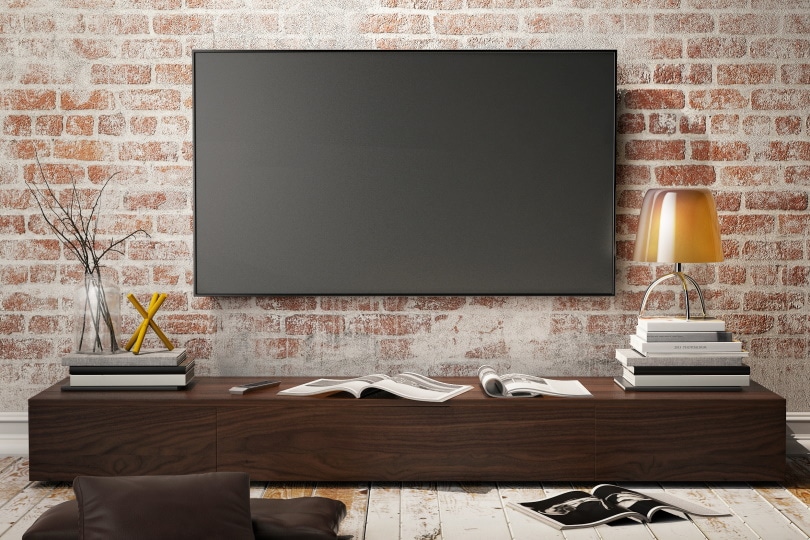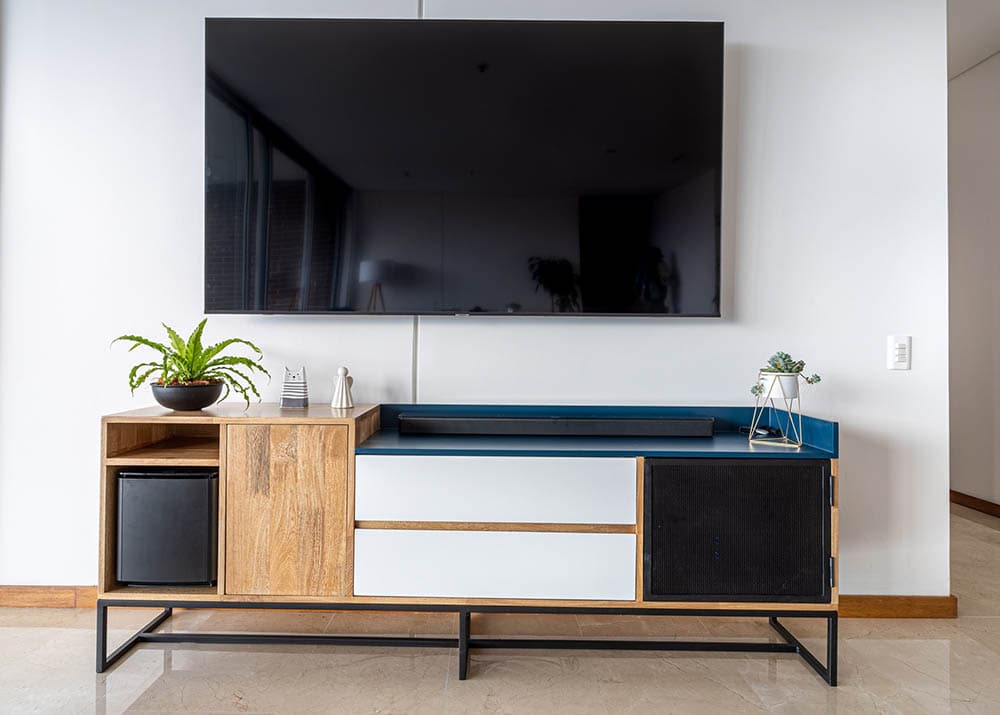What Size TV Should I Have for My Bedroom? Calculations, Facts & FAQ
-
Pete Ortiz
- Last updated:

Relaxing in your own personal sanctuary is one of the goals that many homeowners have for their primary suites. Many people like to unwind by watching their favorite TV shows from the comfort of their own bed. Getting a new TV for your bedroom can be an exciting prospect, but the question becomes what size TV should you purchase? If you get a TV that is too small, you will find yourself squinting at the TV from the head of your bed. If you get a TV that is too large for your bedroom, it could overwhelm the space and flood your cozy abode with too much blue light, which can impair sleep and restfulness.
The traditional television size for a bedroom used to be 32,” but that may no longer make the cut. Primary bedrooms and owner’s suites have grown larger and more expansive in recent years, and 32” might be too small for some spaces. The good news is that there is a helpful way to calculate exactly what size TV is perfect for your bedroom.
Calculate the Best TV Size for Your Bedroom
In order to choose the perfect sized television for your bedroom, you can use this helpful equation. For typical high-definition televisions, you double the size of the television to find the ideal distance to watch from. For example, if you are looking at buying a 32” television, you will need 64” of distance for optimal viewing.

For Standard HD TVs
(Size of TV in inches) x2 = optimal viewing distance
(Distance from you to television) / 2 = optimal TV size
For 4K and 8K UHD TVs
(Size of TV in inches) = optimal viewing distance
(Distance from you to television) = optimal TV size
In order to find the perfect sized television for your bedroom, you will need to do some measuring. If you want to watch TV in bed, measure the distance from the head of your bed to the location where you are going to put your new television. A typical bed is usually 80” long, so if you have a standard bed plus two feet of additional distance between the bed and the TV, you will get 104”. Now divide that number in half, and you get 56. That would be the ideal television size for that space.
If you get a television that is too large for your space, you will be sitting too close to make out the images properly. Watching TV that is too close can result in headaches and become uncomfortable, which is the last thing you want in your bedroom.
If you have a small bedroom, you can upgrade your television’s resolution. 4K and 8K ultra-HD televisions only require an equal distance to their size. For example, for a 32” UHD television, you would only need 32” of space between you and the TV for the best viewing experience.
Double Check Your Room Size, TV Size, and Position
Before making any purchases, it is imperative that you double-check your measurements and your vision for your new TV. Measure the distances from the spaces where you are most likely to watch television in the bedroom to the spot you want to put the TV. Measure twice for the best level of accuracy. Check different positions and different angles to get a variety of numbers to work with. Some people want to mount their TVs, other people want to set them on existing furniture, and some rooms have nooks, niches, or corners where a TV would fit perfectly. Every room is different so you should think about where you want the TV before buying one.
Also, check multiple angles in order to account for a swap. It would be annoying to buy a TV that is the perfect size for one area of your room, only to find that your partner would like it in a different area that is closer or farther away from the bed. The change in distance will alter the optimal TV size.
The angle of the TV also matters. You should be measuring from the viewing spot to the center of the TV. If you have your TV at an angle, the distance to the center of the TV will be slightly different than if the TV was simply facing straight. Those small differences can mean a difference in a few inches of television size.
If you do the measurements properly and come up with a solid vision for your bedroom, you will be able to pick a TV that is the absolute perfect size for the space. That will mean the most enjoyable viewing experience without strain, squinting, and headaches.

Smart TV or Regular?
The other thing to consider is whether you want to get a smart television or a standard television. Standard televisions can be a little smaller than smart televisions. That is because smart TVs require a lot of reading and a lot of scrolling to operate. If you get a smart TV that is small, you could struggle to see what is happening on the screen. You do not want to be squinting at the titles of popular movies when browsing because you have a TV that is just a hair too small. Standard TVs do not have the same features as smart TVs, and they do not require you to scroll through various apps and menus to operate them properly.
If you plan on getting a smart TV, it might be a good idea to go up one size just to make sure that the images are large enough to be clearly seen from your bed.
In Conclusion
If you take the time to plan out your next TV purchase for your bedroom, the results will be sublime. With just a little bit of measuring and a little bit of simple math, you can find a TV that is perfect for your individual space. Most people don’t think about TVs being the most optimal size until they have one that is too small and hard to see or too large and domineering. Getting the right size TV for your bedroom will ensure that the space remains functional, comfortable, and cozy for years to come.
Featured Image Credit: Kristi Blokhin, Shutterstock
Contents


